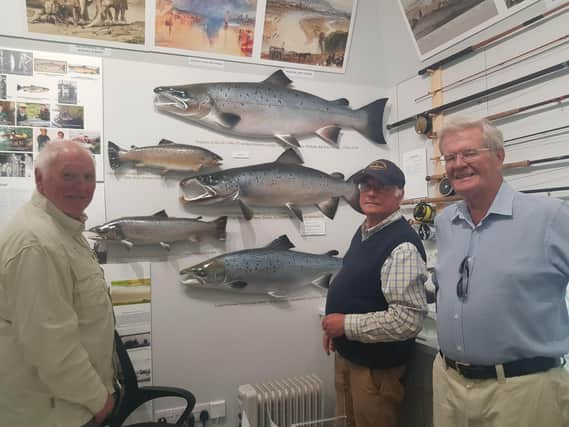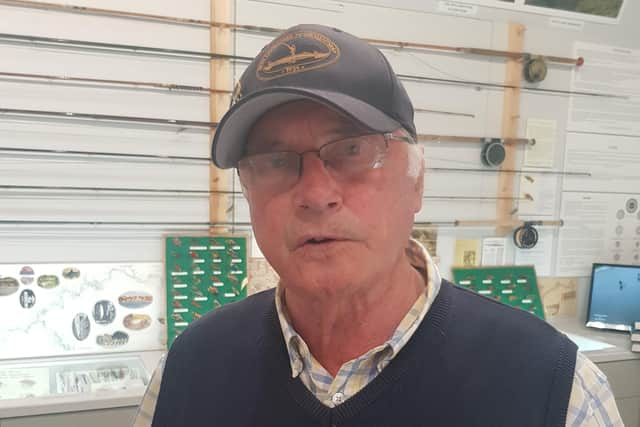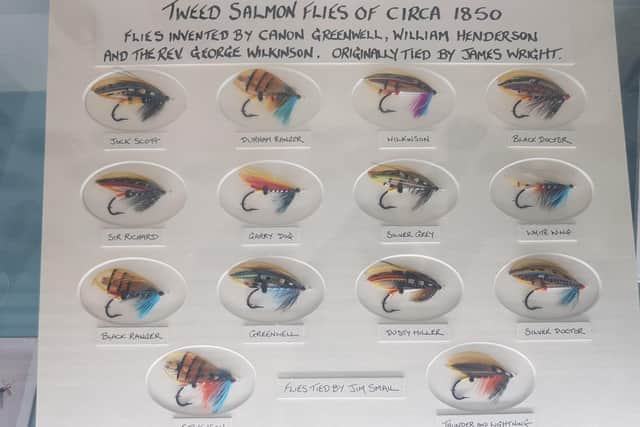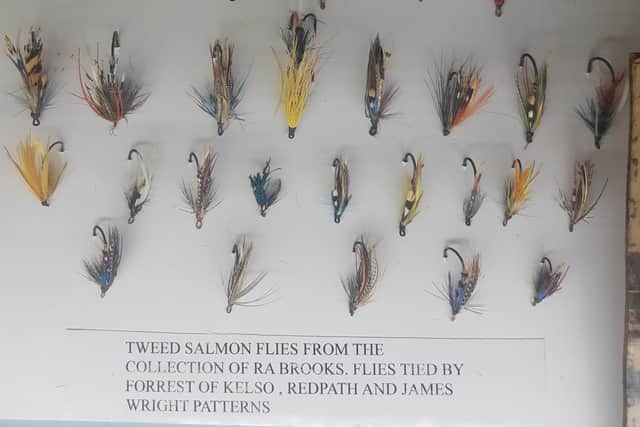Fishing museum set to reel in visitors to Kelso


However, the River Tweed Salmon Fishing Museum is now back open to visitors, and it’s certainly worth viewing, even if you have never held a rod in your hands.
Created by a team of volunteer salmon fishing experts, the museum, based in Kelso’s Town Hall, is a treasure trove of artefacts and information about the king of fish, as well as the flora and fauna found along its journey up the RIver Tweed and its tributaries.
Advertisement
Hide AdAdvertisement
Hide AdYou’ll learn about the history of fishing, from the earliest hunter gatherers to the sports fishermen of today.


Rods and flies used by fishermen through the ages are also on display, as well as replicas of true trophy specimens, including one of a 69-and-three-quarter pounder caught on rod and line by William, the eighth Earl Home, in around 1734, thought to be one of the biggest salmon ever caught.
The museum’s chairman Bill Quarry told us: "You won't find it in the Guinness Book of Records, because we don’t know if they used Scots, English or Dutch pounds. But whichever way you look at it, this would be the record fish caught in the Tweed.”
Bill added that salmon fishing as we know it began here … one of the reasons for setting up the museum.
Advertisement
Hide AdAdvertisement
Hide AdChairman Bill Quarry, who says he fished the Tweed for 64 years, told us: “As a sport, salmon fishing with rod and line began on the Tweed.


"The early pioneers who began fishing on the Tweed, such as Sir Herbert Maxwell and John Younger, spread the word throughout the northern hemisphere, and Tweed fishers went over to Norway in the early 1840s and spread the sport there.”
It’s hoped the museum will attract upwards of 10,000 visitors a year, with many coming from those countries in which those early authors piqued the imagination, creating armies of anglers.
"In the 17th, 18th and 19th centuries, Tweed salmon fed five counties, and a huge amount was exported to London, Paris and Brussels, so the population of salmon back then must have been colossal.
Advertisement
Hide AdAdvertisement
Hide Ad"Nowadays, we’re talking about a population of around 200,000. To do all they did back then with the fish, there must have been three or four million of them.”


However, despite decreasing stocks in the Tweed, it remains one of the most sought-after rivers in the world to catch salmon, so it’s rather apt that the only known museum of its kind in the world is based in salmon central, Kelso.
The museum also boasts a replica 19th century bothy; a replica of the Roberton Stone, in which a salmon is carved, which proves the fish was seen as a kind of deity among early hunter gatherers; as well as a fishing simulator, which can be tried out by visitors.
Of the latter, Bill explained: “You hold the rod, and there’s a TV screen which shows a fish under the water, and it comes and takes your fly. It's like an electric shock. The “take” from a salmon is something else. You then need to play the salmon, and the computer does all the work. If you play badly, you will lose the fish.”
The museum is open seven days a week (Monday-Saturday 10am-4pm, Sunday 10am-3pm and is free of charge for visitors.